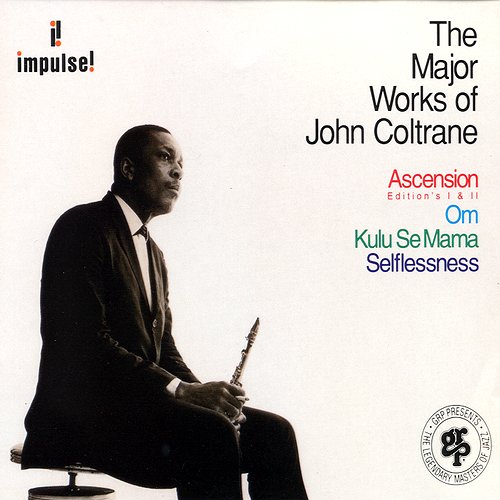

Jun 28, 1965 - Oct 14, 1965
Over the course of two crucial discs, The Major Works of John Coltrane compiles the saxophonist's most important extended free jazz pieces from 1965. This is the material that made Coltrane a giant of the avant-garde, completely casting off the limits of melody, harmony, and tonality that he'd been straining against. All the performances feature Coltrane's classic quartet augmented by Pharoah Sanders and several others, depending on the session. Literally and figuratively, the biggest piece here is of course "Ascension," the album-length, 11-piece free improvisation that finally picked up the gauntlet thrown down by the release of Ornette Coleman's Free Jazz four years earlier. Present in both of its two takes, it's among the most frightening jazz performances ever committed to tape, pairing Coltrane's search for spiritual transcendence with a screeching ferocity (courtesy of five saxophones) that never lets up. Ascension was far more abrasive and visceral than Free Jazz, benefiting from four years of development in jazz's avant-garde, which helped make each individual player's voice more suited to this kind of chaotic, textural music. Not all of Coltrane's free work was this consistently extreme, but it did come close in isolated moments. The incantatory "Om" expands on Ascension by contrasting the same sort of passionate, banshee-scream ensembles with eerie, meditative passages, bookending the piece with poetic recitations. "Kulu Se Mama," based on a song by percussionist/vocalist Juno Lewis, further explores the ritualistic dimension of "Om" with subtle hints of danceability and Creole/Caribbean flavor. "Selflessness" is the most conventional of the pieces, starting out like a standard Coltrane Quartet piece before moving into the large-ensemble explorations. There's a lot to digest here, but as an encapsulation of Coltrane's freest and most challenging music, there's no better place to turn.